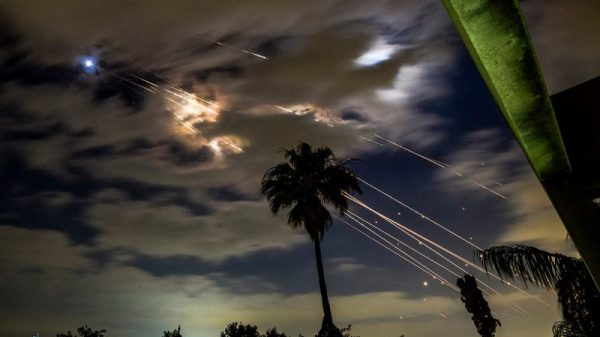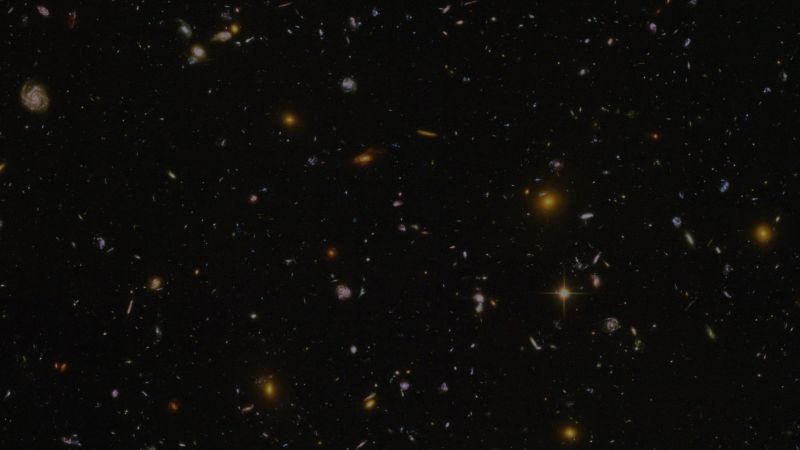Water molecules have been detected on the surface of asteroids for the first time, proving that these remnants from the formation of our solar system aren’t just dried-up space rocks.
Astronomers believe that the impact of asteroids crashing into our planet may have helped deliver water and other elements to early Earth, so finding evidence of water on asteroids could support that theory, according to a new study.
The data was collected from an instrument on the now-retired Stratospheric Observatory for Infrared Astronomy airborne telescope. Called SOFIA, the infrared telescope flew aboard a Boeing 747SP aircraft modified to fly through the stratosphere above 99% of Earth’s atmosphere, which blocks infrared light.
The Faint Object infraRed CAmera for the SOFIA Telescope, or FORCAST instrument, allowed astronomers to detect water molecules on Iris and Massalia, two asteroids in the main asteroid belt between the orbits of Mars and Jupiter. Both are more than 223.1 million miles from the sun.
The findings were published Monday in The Planetary Science Journal.
Astronomers were inspired to use SOFIA to study asteroids after the telescope spotted evidence of water on the moon, said lead study author Dr. Anicia Arredondo, research scientist at the Southwest Research Institute in San Antonio.
Evidence of hydration had been found on the two asteroids previously by study coauthor Dr. Maggie McAdam, research scientist at NASA’s Ames Research Center in Mountain View, California, while using a different telescope. But researchers weren’t sure whether water or another molecular compound such as hydroxyl caused the hydration, Arredondo said.
“Our new observations with SOFIA definitively said that what they saw was indeed water,” Arredondo said. “But these objects are part of the S-class of asteroids, which means they are mostly made of silicates, and up until Dr. McAdam’s results, they were assumed to be completely dry.”
Finding water on dry cosmic surfaces
The amount of water the team detected was roughly equivalent to that of a 12-ounce bottle of water trapped within a cubic meter of soil, Arredondo said, which is comparable SOFIA’s moon finding. The telescope picked up on the signature of water molecules in one of the largest craters in the moon’s southern hemisphere in 2020.
Like the water found on the lunar surface, “on asteroids, water can also be bound to minerals as well as adsorbed to silicate and trapped or dissolved in silicate impact glass,” Arredondo said.
Asteroids are the leftovers from when the planets formed in our solar system. Studying their compositions can tell astronomers where in our cosmic neighborhood the asteroids originated.
“When the solar system was forming, different materials formed based on their distance to the Sun because material (farther) from the Sun cooled down faster (than) material nearer to the Sun,” Arredondo said via email. “That’s why the inner planets like Earth and Mars are made of rock and the outer planets like Neptune and Uranus are made of ice and gas.”
Detecting water on Iris and Massalia can help astronomers trace the history of these particular asteroids, suggesting their formation took place far enough away from the sun to avoid having their water boiled away by heat.
Searching for water across the solar system
The researchers attempted to look for water on two other asteroids using SOFIA, but the detection was too faint. Now, the team is using the James Webb Space Telescope to zero in on different asteroids and search for water signatures.
While the Webb observations are ongoing, Arredondo said the preliminary results have encouraged the team to request time to observe 30 more asteroids using the powerful infrared telescope.
“The JWST telescope is much larger than the SOFIA telescope, so it can collect data with higher quality, and it can collect data for more asteroids in a shorter amount of time,” Arredondo said. “I hope to be able to observe many different asteroids with JWST to look for this signature of water, and hopefully be able to take inventory of the water in the asteroid belt.”
Webb could help astronomers better understand the distribution of water across the solar system, as well as the composition of different types of asteroids.
“We really weren’t expecting to find water on these silicate-rich asteroids,” Arredondo said. “Mostly when we talk about hydration on asteroids, we are talking about more carbon-rich asteroids, like asteroid Bennu that NASA’s OSIRIS-REx mission went to. So now I want to look for trends between (the) amount of hydration and composition. I want to know if the carbon-rich asteroids have significantly more water than silicate-rich asteroids, or if they have similar amounts.”







































